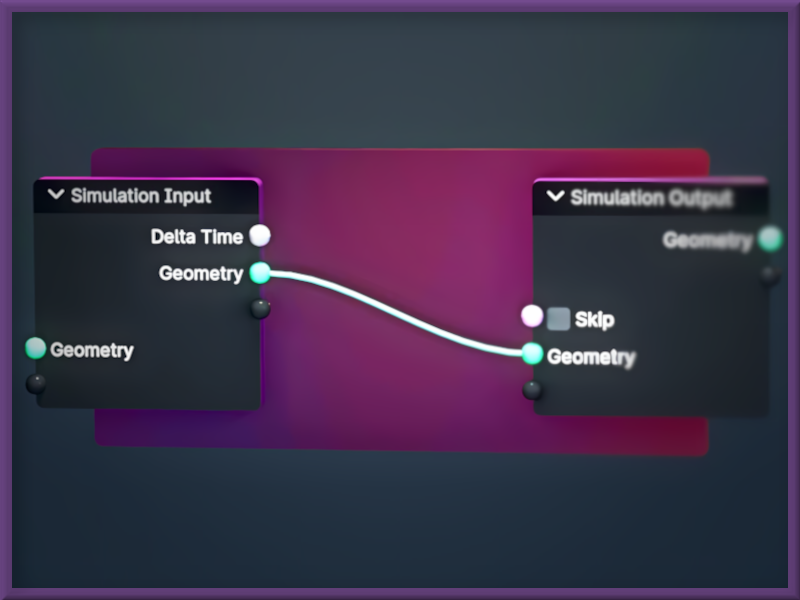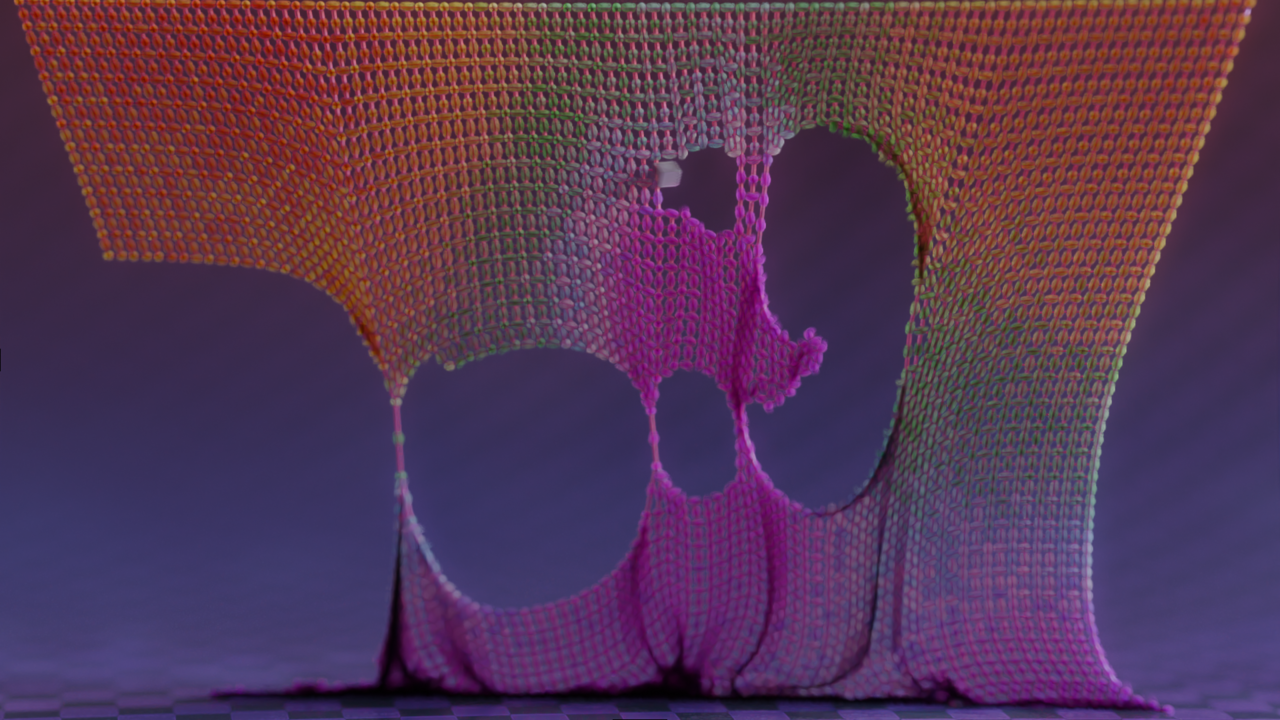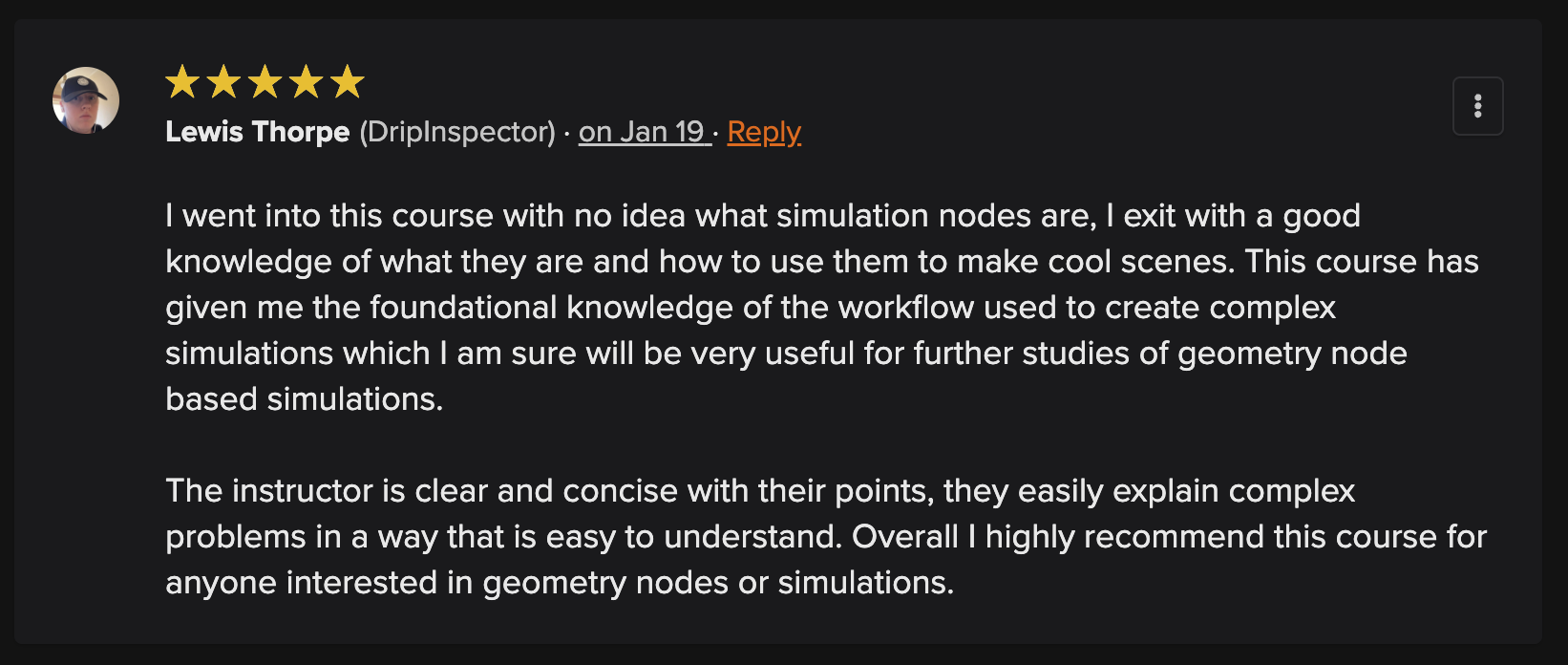Particles: Introduction To Simulation Nodes
Learn everything there is to know about Simulation Nodes… and make a custom physics engine at the same time!
We’re going to build this whole behemoth from the ground up. From single particles to boundary collisions. From particle-to-particle collisions to a non-compressible fluid solver. We’ll simulate strings, cloth, rigid, and soft bodies!
It’s time to take Geometry Nodes to the next level
In this course, we will cover:
- repeat zone
- simulation zone
- position/velocity/acceleration
- delta time
- variable radius
- constraints of all kinds
- Euler/Verlet integration
- dampening
- stability
- shading
- collision detection
- boundary conditions strings/cloth/rigid/soft bodies
- the list goes on and on!
Simulation Zone
We'll begin with covering the ins and outs of the Simulation Zone - what it's good for, how temporal loops work, steps, delta time, attributes, initial conditions, etc. Expect to get familiar with these nodes as we start implementing vector-based physics!
A Complete Workflow
This is not a "click this button - trust me, it works" kind of course. Instead, we'll go over what we're doing and why we're doing it. In fact, in Chapter 2, we will spend some time optimizing our initial physics solver. From the Euler approach to the Verlet approach, we'll reduce our simulation error as much as possible.
Surpassing Blender
Have you ever noticed that Blender doesn't natively let you rip cloth during a simulation? Since we don't have access to the underlying logic that runs the cloth solver, there is nothing we can do about that... But with our own cloth solver this isn't an issue! We can do even better than that! Want to mix simulation types (fluid + cloth, rope + rigid body)? With a particle based physics engine none of those limitations exist!
Defy limitations and start building your own particle based physics engine!
What customers are saying ⭐️⭐️⭐️⭐️⭐️
Discover more products like this
blender particles cgcookie engine tutorial simulation particles cgmatter








